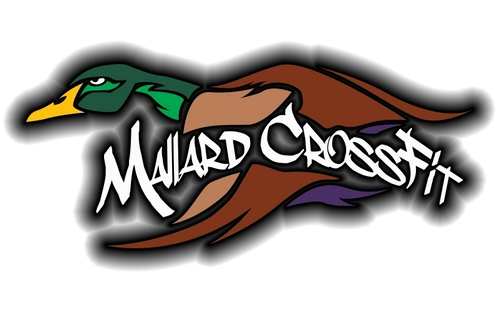This is probably the most commonly used and broadest measure of profitability. To calculate the gross profit margin, you first need to subtract the value of the cost of goods sold from the value of revenue. The profit margin ratio directly measures what percentage of sales is made up of net income. In other words, it measures how much profits are produced at a certain level of sales. Profit margin has its limitations, however, in terms of comparing companies. Businesses with low-profit margins, like retail and transportation, will usually have high turnaround and revenue, which can mean overall high profits despite the relatively low profit margin figure.
What does negative profit margin mean?
High-end luxury goods, by comparison, may have low sales volume, but high profits per unit sold. There are other key profitability ratios that analysts and investors often use to determine the financial health of a company. For example, return on assets (ROA) analyzes how well a company deploys its assets to generate a profit after factoring in expenses. A company’s return on equity (ROE) determines a company’s return on shareholder equity, meaning its assets minus its debts. Having a high profit margin is based on how the business manages its funds and can be impacted by a variety of factors. In general, luxury brands tend to have a higher profit margin since consumers are willing to pay high prices, though businesses in different industries can turn high profit margins.
- This influences which products we write about and where and how the product appears on a page.
- You also know how to add the formulas to your financial statements in Excel or Google Sheets to automate calculations.
- It is one of the most common metrics used in accounting to determine your business’s health.
- Last year Trisha’s net sales were $1,000,000 and her net income was $100,000.
- Profit margin varies by industry, so a good profit margin in one company may be very low or very high, compared to a different company.
- When calculating the net profit margin ratio, analysts commonly compare the figure to different companies to determine which business performs the best.
We and our partners process data to provide:
Unlike operating margin and EBITDA margin, net profit margin is directly impacted by how the company is financed and the applicable tax rate. Since profit margins are expressed single entry system definition in percentage form, the resulting figure in decimal notation must be multiplied by 100. For practically all profit margins, the general “plug-in” formula is as follows.
Operating Profit Margin
Weakness at these levels indicates that money is being lost on basic operations, leaving little revenue for debt repayments and taxes. The healthy gross and operating profit margins in the above example enabled Starbucks https://www.quick-bookkeeping.net/balance-sheet-example-template-format-analysis/ to maintain decent profits while still meeting all of its other financial obligations. As you have seen, profit margins are easy to calculate and can provide valuable insight into a company’s profitability.
It is recommended to compare only companies in the same sector with similar business models. Editorial content from The Ascent is separate from The Motley Fool editorial content and is created by a different analyst team. Mary Girsch-Bock is the expert on accounting software and payroll software for The Ascent. This credit card is not just good – it’s so exceptional that our experts use it personally. It features a lengthy 0% intro APR period, a cash back rate of up to 5%, and all somehow for no annual fee! In particular, depreciation and amortization represent non-cash accounting conventions used to match capex spend with the corresponding revenue generated under the matching principle.
Never increase efficiency at the expense of your customers, employees, or product quality. If you are a business owner, improving your profit margin is an important part of growing your company. Your profit margin shows how much money you make from every dollar of your gross revenue. When you improve your profit margin, you actually make more money without needing to increase sales or gross revenue.
The range of acceptable profit margin values depends on many factors, including industry, company size, and business model. You will see references to general rules of thumb, indicating that 10% is average and 20% is good. However, this is meaningless without identifying competitors and benchmarking your industry. Additionally, you should check what margins are commonly used within your industry. Depending on the industry and business model, you need to consider different types of expenses and liabilities.
Finding new customers and marketing your goods or services to them consumes time and is expensive. But when you focus on ways to increase customer retention, you can continue to make sales to the same people over and over without the expense of lead generation and conversion. Profit margin is a percentage that is based on the amount of revenue left over after some or all business-related expenses have been deducted. You’ll either need to increase sales while keeping costs the same or lower your costs. Profit margin varies by industry, so a good profit margin in one company may be very low or very high, compared to a different company. In general, though, a 10% profit margin is strong, but a 5% profit margin is low.
Here are the mathematical formulas for calculating the four types of profit margins. To calculate the net profit margin from the income statement, refer to the bottom line, or the total amounts at the bottom of the statement. Given those data points, Salesforce’s gross profit is $15.8 billion, whereas its operating income (EBIT) is $455 million. For comparison among comparable companies, the two most commonly used profit margins are the operating margin and EBITDA margin. A jewelry company that sells a few expensive products may have a much higher profit margin as compared to a grocery store that sells many cheap products. There are four primary ways to increase gross profit margin, which by extension increases net profit margin.
Whatever your regular supplies are, don’t just buy them when you need them. Pay attention to the price, and buy in bulk when prices are low or supplies are on sale. If you currently have a sales mix, meaning you sell multiple products, it can be helpful to calculate the margin mix for all of your products individually. This margin calculation can help you determine which products are the most profitable. As a business owner, one of the most important things you can do is pay attention to business metrics.
When calculating these margins, remember to compare them to similar companies in your industry. This year Trisha may have made less sales, but she cut expenses and was able to convert more of these sales into profits with a ratio of 25 percent. Suppose we have a company that https://www.quick-bookkeeping.net/ reported the following income statement data in the latest fiscal year, 2021. For comparative purposes, EBIT and EBITDA are used most frequently due to how the company’s operational performance is portrayed – while remaining independent of capital structure and taxes.
If you work in a team and use multiple files, you may want to consider a tool like Layer. You can synchronize data across multiple locations and formats and easily keep track of progress and results. Since most of the time generating additional revenues is much more difficult than cutting expenses, managers generally tend to reduce spending budgets to improve their profit ratio. The most common and widely ledger balance meaning ledger vs available balance used type of profit margin is net profit margin, which accounts for all of a company’s costs, both direct and indirect. In essence, the profit margin has become the globally adopted standard measure of the profit-generating capacity of a business and considered a top-level indicator of its potential. It is one of the first few key figures to be quoted in the quarterly results reports that companies issue.
While comparing two or more ventures to identify the better one, investors often hone in on their respective profit margins. There are several ways businesses can work to improve their profit margins. Some methods may work better depending on the business, the industry, and customer base. An example is the net profit margin, since non-operating income/(expenses), interest expense, and taxes are all factored into the metric. When calculating the net profit margin ratio, analysts commonly compare the figure to different companies to determine which business performs the best. Net profit margin is a strong indicator of a firm’s overall success and is usually stated as a percentage.
Profit margin is a key business metric in measuring the success of your business. Calculating profit margin determines the percentage amount of profit made in comparison to your sales made, or revenue. Rather than showing a dollar amount for the profit made, profit margin shows a ratio as indicated with a percentage amount. Profit margin can help to make pricing decisions, identify any issues, and ultimately help grow your business.










